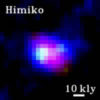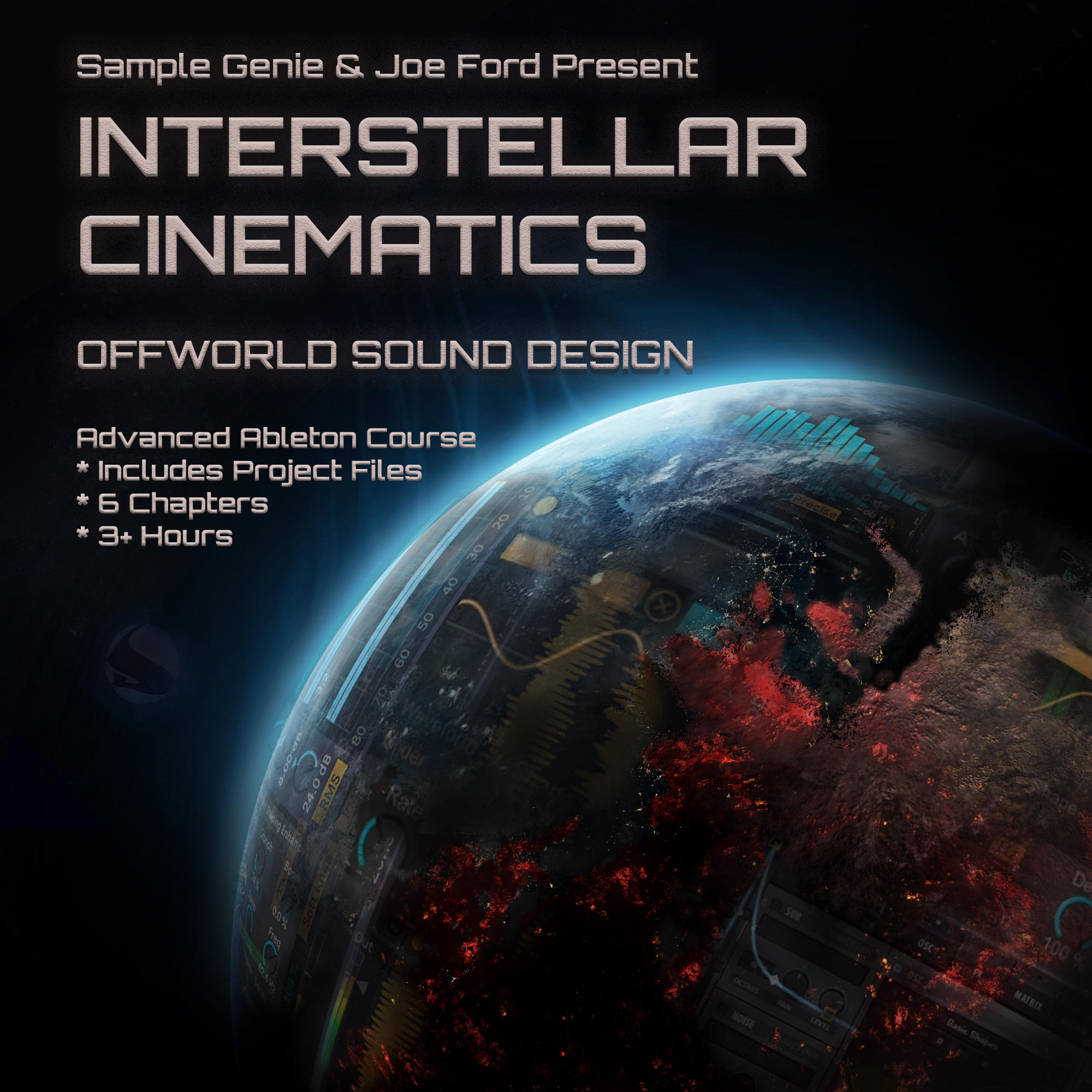Analysis of S5E06: Joe Ford – Mixdown Workshop
- This topic has 17 replies, 11 voices, and was last updated 6 years, 10 months ago by ,
 shrike.
shrike.
-
AuthorPosts
-
-
2017-12-11 at 20:48:04 #34501,
 HarryModerator
HarryModeratorDAW: Cubase, but techniques will apply to any DAW
Topics: A/B’ing, automation, mixing, mixdown, notching, sidechain compression—
WATCH NOTES
Defines the mixdown as the relationship and levels between track elements, how clearly they stand out, and the overall frequency shape of the mixStates the master bus chain is important.
– Like to keep the master bus as simple as possibleAims to correct issues in the mix during the early stages of writing, instead of trying to correct later in the track writing process.01:45 – only has a limiter and frequency analyzer on the master bus
– Goes over his preferred settings for each.
– Limiter (FabFilter Pro-L): no lookahead, attack turned up to maximum, release turned to 0.03:35 – explains the frequency analyzer he uses (Voxengo SPAN, freeware version)
– States that he does not have great monitors or room, so he mostly works with a headphone set-up.
– 5:45 – his preferred SPAN settings: block size – 8192, overlap 50, avg time 50, slope 0.0006:30 – mixing for this demonstration is going to be from the ground up, instead of taking a finished project and working backwards.
07:40 – recommends color coding track elements
– Explains his system, says that it makes coming back to a project easier to mentally process what elements are in it.08:30 – starts with the bass
– 08:50 – actually cuts out the low end, and recreates the sub-140 Hz low end with Massive (but nearly any synth would work for this)09:50 – works out the notes of the bassline
– Thinks the bassline is in 1/8th notes
– Makes the new bass punchy with an envelope controlling pitch at the start of each hit
– States that usually he would make the sub bass and midrange bass together, but for this demo it is a little tougher because he is recreating the sub agains a sample loop15:00 – interesting point about sub having its fundamental frequency and a harmonic 5th above it, using a second oscillator to control the level of the harmonic
19:50 – bounces sub to audio so MIDI retriggering is not an issue, and so he can do fades on the hits.
– The fades are so the kick is not conflicting with the sub bass.20:00 – references the loop against a Mefjus track
21:00 – working on the main elements so they do not overlap too much
– Kick against sub
– Uses fades on sub audio, at points where the kick is hitting
– Listened for distorting when these elements played together, and after the fades were added, the frequency conflict was gone, and no distorting.22:35 – adding some high frequency to a copy of the kick
– Advises using a linear phase EQ to take care of any possible phase cancellations.24:30 – snare against mid bass, uses a notch in EQ to address the conflicting frequencies.
– Automates the notch to duck when snare hits happen.27:00 – figuring out how long the resonant part lasts
– Interesting technique. Joe Ford makes a tight EQ band on the snare, to get the region of the resonant part bounces down to audio, uses as a visual reference to draw the automation on the mid range bass.29:50 – kick & snare transients, wants them to cut through the mix
– Busses everything that is conflicting with these transients, e.g. all the other drums.
– Sidetracks a little to show how the reference track’s high frequencies peak around -39 dB, and adjusts his layer drums to match.
– States a lot of current tracks tend to have highs peaking at -36 dB, finds that to be a little harsh sounding.31:30 – sidechain group
– Wants extreme compression around the transients, and wants the sidechained elements to snap back quickly.
– Hard knee for the instant snap of compression, fast attack & release, maximum ratio, adjust the threshold to taste.
– Uses the kick transient click as trigger, uses a new audio channel of it, is not an audible sound, and this click is used for both the kicks and snares.35:30 – reviews the tutorial.
– Reference track in the same key as yours.
– Good look at where frequencies are sitting.
– A very consistent low end, “created from sine waves usually”.
– Sidechain elements around the kick & snare.—
THOUGHTS & QUESTIONS
– Joe Ford’s constant A/B’ing against the Mefjus tune was a good example to me of how to utilize the technique. I’ve got Magic AB, and admittedly, I almost never use it, so this video has me more motivated to get in the practice of A/B’ing. A few times in the video I went “oh, I should try it that way”.– Curious what his headphone set up is. My current set up is a pair of Hifiman 400i’s and a Subpac S2, both powered off a SoundBlaster E5.
– Good demonstration of maybe how to approach a sketch after you’ve come back to it, relating to what Lenzman showed earlier this season, and then applying Joe Ford’s techniques to build up a sketch in to a finished arrangement & track.
– Be mindful of distorting, versus distortion. Unintentional artifact from overlapping layers, versus intended effect to add harmonics and character.
When I’m in Logic, I probably have to follow the example of Joe Ford drawing in automation on mid range’s EQ whenever the snare hits. In Bitwig 2, it seems like I can utilize modulators to do this, specifically I have been experimenting with the Audio Sidechain listening to the snare track, and pushing the node on the EQ. Maybe makes the track a bit more dynamic too? Like it is living & breathing, versus being a static track of audio.—
Going to try and finish up my watch notes for Season 1, and have posted before New Year’s. A lot going on with holidays, family, travel, etc."Knowledge kept is knowledge lost." - Bobbito Garcia
-
2017-12-26 at 09:11:30 #34732,
 MoritzMofesParticipant
MoritzMofesParticipantIt was a really solid tutorial, a lot of very important things packed into 35 minutes.
-
2018-01-03 at 09:27:56 #36008,
 MindParticipant
MindParticipantMy first vid watched with Sample Genie, and I’ve learned a few things off this already. Thanks gents
-
2018-01-16 at 17:32:29 #36359,
 zakParticipant
zakParticipantI’ve tried the sidechain technique copied it exactly, doesn’t work for me at all?
I’m using Pro C 2 dont have Pro C 1
Tried asking Joe Ford he cant see what I’ve done wrong from the video i recorded either
I use Cubase 9
-
2018-01-16 at 18:32:36 #36360,
 zakParticipant
zakParticipantIgnore my last post got it sorted
-
2018-01-17 at 14:50:52 #36370,
 GENIE HQKeymaster
GENIE HQKeymasterGlad you got it working, what was the solution out of interest?
-
-
2018-02-02 at 09:55:43 #37760,
 percydnb@gmailcomParticipant
percydnb@gmailcomParticipantnice tut!
-
2018-02-02 at 11:46:58 #37766,
 zakParticipant
zakParticipantIgnore my last post got it sorted
I was draw the blocks instead of using a sample like joe, you’ve got too use a sample else Pro C doesn’t now when too duck
-
2018-02-03 at 10:06:29 #37799,
 KjibnParticipant
KjibnParticipant– Curious what his headphone set up is. My current set up is a pair of Hifiman 400i’s and a Subpac S2, both powered off a SoundBlaster E5.
Yeah I’d be really interested to hear from Joe about his headphone set up. How do you get on with your soundblaster Harry?
-
2018-02-04 at 20:34:21 #37844,
 HarryModerator
HarryModeratorFor the most part I’ve been happy with it. I tend to have it on the high gain setting, but not blasting out my ear drums. Also learned through trial & error to plug it directly in to my computer, and not off a powered USB, as it would have drop outs, or have trouble powering up properly, like I would hear sound by it was distorted in strange ways.
Eventually I hope to have a soundcard with an optical output, and try the E5 connected off of that. Right now though, I rarely get to turn on my monitors as I tend to work at night when everyone else in the house is asleep, and my set up is below my daughter’s room.
"Knowledge kept is knowledge lost." - Bobbito Garcia
-
-
2018-02-04 at 20:56:32 #37845,
 ZsomborParticipant
ZsomborParticipantHey!
Really loved this tutorial!!
Only thing isn’t quite clear is the Pro L-s attack setting on the master chain. Can someone please explain how it works with the attack all the way up? In theory that is way too much time, right?-
2018-02-05 at 14:53:31 #37855,
 HarryModerator
HarryModeratorI took a look at the Pro L manual, and it gave this bit of info, bold emphasis mine:
Attack and Release
Apart from the fast ‘transient’ stage, the limiter has a slower ‘release’ envelope stage that responds to the average dynamics of the incoming audio. The Attack and Release knobs control how quickly and heavily the release stage sets in. Shorter attack times will allow the release stage to set in sooner; longer release times will cause it to have more effect.In general, short attack times and long release times are safer and cleaner, but they can also cause pumping and reduce clarity. On the other hand, long attack times and short release times can increase apparent loudness and presence, but at the expense of possible distortion.
Hopefully that helps?
"Knowledge kept is knowledge lost." - Bobbito Garcia
-
2018-02-05 at 22:10:38 #37864,
 ZsomborParticipant
ZsomborParticipantYes now i get it, thanks a lot!!
Actually Joe mentioned this but it wasn’t quite clear.. guess should’ve checked out the manual myself 🙂
Thanks again! -
2018-02-06 at 01:32:57 #37868,
 HarryModerator
HarryModeratorPDF manuals are super helpful. CTRL + F and you lock in on info quick, helps me at my actual job all the time.
"Knowledge kept is knowledge lost." - Bobbito Garcia
-
-
2018-02-08 at 21:44:02 #37915,
 AnimusParticipant
AnimusParticipantHifimans on a soundblaster. Do yourself a favor and upgrade your soundcard and also get a dedicated headphone amp. Check out Schitt audio for ideas. I have a Jotenheim for my audio-techinca ATH-R70x and Yamaha HS80s getting signal from a MOTU 624. Hifimans need power, clean power. Always read the manual despite tempation to fiddle immediately. Good manuals ie NI, will even feature a tutorial you can follow to learn basic functions and workflows. End up spending less time frustrated and more time to make banging dnb!
-
2018-02-17 at 08:23:29 #38076,
 StatelapseParticipant
StatelapseParticipantAnybody know where I can find the full video? Signed up for full membership for this video in particular.
Thanks -
2018-03-03 at 21:32:41 #39536,
 shrikeParticipant
shrikeParticipantHow in the devil did he band-sweep in Span? I can’t for the life of me find the answer anywhere
_-| get to work |-_
-
2018-03-03 at 21:35:19 #39537,
 shrikeParticipant
shrikeParticipantFound it
Ctrl/Cmd LMB
_-| get to work |-_
-
-
AuthorPosts
- You must be logged in to reply to this topic.


